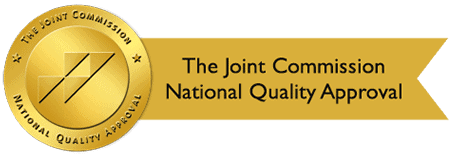By: Design for Change Recovery
Categories:
Combating Drug Abuse in America: Can We Ever Win This Brutal War?
You are here:Our country has fought many wars throughout history, but none of those wars have lasted as long as the war on drug abuse in America. For more than 50 years, the United States government has tried various tactics and strategies for combating drug abuse and addiction, but the results have been disappointing.
The war on drugs is a complex system made up of well-intentioned measures that don’t always succeed. Consequently, our government has not made as much progress as we would like when it comes to combating the drug epidemic.
Anti-drug strategies have helped in some instances, nonetheless, many thousands of people continue to use drugs and suffer fatal overdoses daily. However, addiction treatment providers have made a notable difference by providing evidence-based treatment that facilitates recovery. Yet, the death count rises daily while society suffers the repercussions.
How Effective Is the War On Drugs?

As a result of the war on drugs, our prisons have been overloaded with people who were convicted of substance use, possession, selling, or other drug-related crimes. A report issued by the U.S. Sentencing Commission shows that 76.9% of drug offenders are rearrested within five years after being released from state prison. Offenders released from federal prison show a recidivism rate of 41.9% within five years.
Drug Use in America’s Prison Population
Clearly, incarceration works for some people, whereas others resume right where they left off as soon as they are released. Furthermore, in many cases, a person who is incarcerated for simple cannabis possession ends up using harder drugs while behind bars. The isolation, shame, depression, and fear generated by their situation cause them to self-medicate with drugs that are readily available through fellow prisoners. As a result, one problem is solved while a new one is created.
Unfortunately, imprisonment doesn’t guarantee that a person won’t have access to drugs. In fact, the Bureau of Justice Statistics reports that from 2001 to 2018, the number of overdoses in state prisons rose by more than 600%. In county jails, the number increased by more than 200%. The report also shows that drug use behind bars typically includes opioids (especially fentanyl), synthetic marijuana (K2), and methamphetamine.
Drugs can get into prisons in a variety of ways. Sources include visitors, packages, letters, and prison staff. To address the problem, prison officials are gradually making addiction treatment programs available to inmates. It has finally become apparent that if they treat the addictions, there will be a decreased demand for illicit drugs inside prison walls.
Recent Strategies for Combating Drug Abuse
Former President, Donald Trump, declared opioid use and overdose deaths a national health emergency in 2017. He launched a 5-point strategy that continues today. The strategy includes these components:
- Expand access to prevention, treatment, and medical care.
- Improve the availability of drugs to combat overdose.
- Increase efforts to raise public education and awareness.
- Provide support for advanced research in drug abuse.
- Promote better pain management methods.
Currently, the Biden administration’s National Drug Control Strategy seeks to “improve access to evidence-based treatment, strengthen prevention and harm reduction approaches, and promote recovery.”
President Biden recently pardoned thousands of people that were convicted of simple cannabis possession. This is a small step, but one in the right direction. To put this in perspective, about 91% of the 350,149 cannabis arrests in 2019 were for possession only. By reducing the number of people in jail and prisons, the U.S. will not only save money but will also reduce the number of destabilized lives.
Scientists and researchers are actively looking for more ways to help end substance use and addictions. As an example, the NIH Heal Initiative (Helping to End Addiction Long-Term), is one new strategy funded by NIDA. The goal is to provide support and education to those who work with drug offenders such as counselors, judges, social workers, and case workers.
Don’t Become Another Statistic of Drug Abuse in America
Until America reaches the point where the war on drugs is over, Design for Change Recovery will continue to provide quality, effective addiction treatment. As a fully-licensed, evidence-based program, we’ve helped thousands of clients reach their recovery goals.
At Design for Change, a key part of our treatment is healing all underlying aspects of your addiction to ensure that you enjoy long-term recovery. Our methodology includes various therapies such as CBT, counseling, holistic therapies, family therapy, and more.
If you struggle to manage your substance use, don’t wait too long to reach out for help. Your physical and emotional well-being is at increased risk with each passing day. Continued substance use also increases your risk of suffering an overdose. So, take steps today to avoid becoming another statistic.
Find out more about our programs by contacting our Lancaster, CA facility. A representative will always be available to answer your questions and assist you in choosing the right program for your needs.
Sources:
- ussc.gov/ – Recidivism Among Federal Drug Trafficking Offenders
- npr.org/ -Overdose Deaths in State Prisons Have Jumped Dramatically Since 2001
- cms.gov/ – Ongoing Emergencies & Disasters
- /nida.nih.gov/ – Criminal Justice DrugFacts


